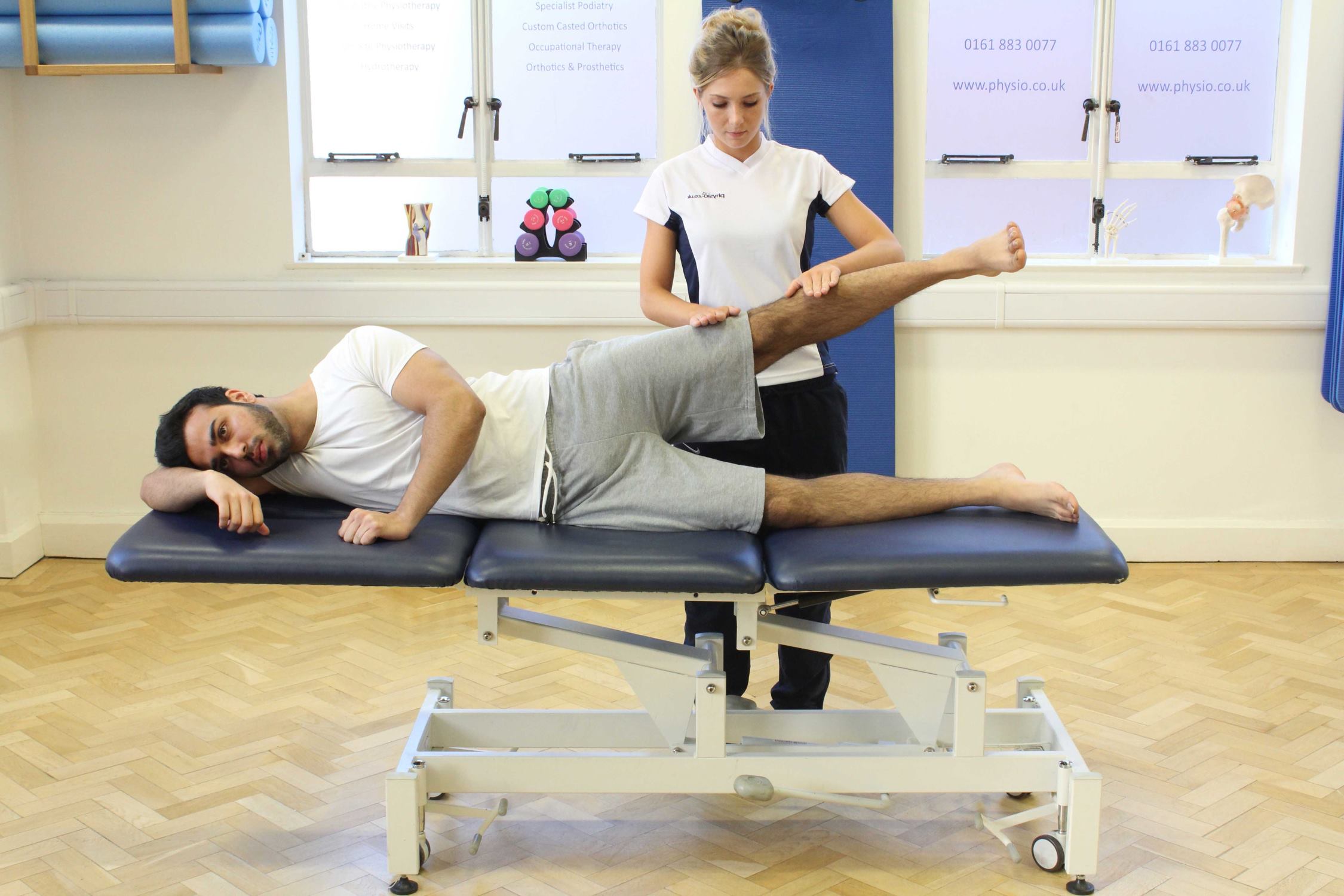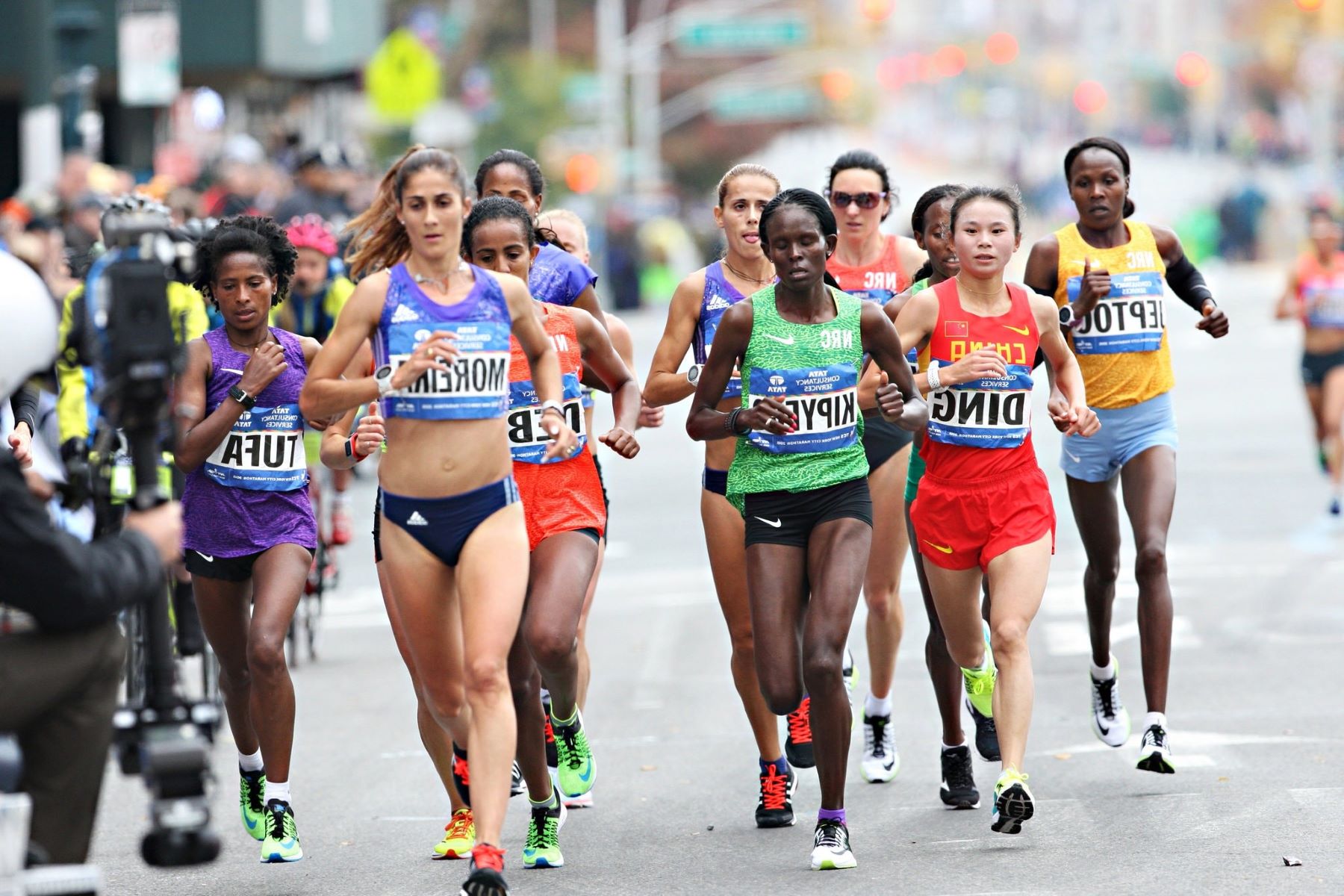Home>Training & Techniques>Training Plans>Training For Consecutive Marathons: A Comprehensive Guide


Training Plans
Training For Consecutive Marathons: A Comprehensive Guide
Published: March 3, 2024
Looking for comprehensive training plans for consecutive marathons? Our guide has everything you need to prepare effectively and avoid burnout.
(Many of the links in this article redirect to a specific reviewed product. Your purchase of these products through affiliate links helps to generate commission for Therunningadvisor.com, at no extra cost. Learn more)
Table of Contents
Understanding the Physical and Mental Demands
Preparing for consecutive marathons requires a deep understanding of the physical and mental demands involved. Endurance running places significant stress on the body, necessitating a comprehensive training approach that encompasses both physical and mental preparation.
Physically, the demands of consecutive marathons are immense. The body undergoes extensive stress during long-distance running, challenging the cardiovascular system, muscles, and joints. Endurance training is crucial for building the necessary stamina and resilience to withstand the rigors of multiple marathons. This involves gradually increasing mileage, incorporating speed work, and dedicating time to cross-training activities such as cycling and swimming to enhance overall fitness and reduce the risk of overuse injuries.
Mentally, the demands of consecutive marathons can be equally taxing. Endurance running requires unwavering mental fortitude and resilience. Athletes must cultivate a strong mindset to push through physical discomfort, overcome mental fatigue, and stay focused during training and races. Mental preparation involves developing coping strategies for managing fatigue, maintaining motivation, and staying mentally strong throughout the grueling training and racing process.
Understanding the physical and mental demands of consecutive marathons is essential for developing a holistic training plan that addresses both aspects. By recognizing the challenges and preparing accordingly, athletes can optimize their training, enhance their performance, and minimize the risk of burnout or injury. This comprehensive approach sets the foundation for successful participation in consecutive marathons, allowing athletes to thrive both physically and mentally as they pursue their running goals.
Creating a Training Schedule
Creating a well-structured and effective training schedule is paramount for preparing for consecutive marathons. A comprehensive training plan should encompass a balance of mileage, speed work, cross-training, and rest days to optimize performance and minimize the risk of overtraining and injury.
Mileage Build-Up
Gradually increasing mileage forms the cornerstone of marathon training. The training schedule should incorporate a progressive build-up of weekly mileage, allowing the body to adapt to the increasing demands of long-distance running. This gradual approach minimizes the risk of overuse injuries and provides the foundation for building endurance.
Long Runs
Long runs are integral to marathon preparation, and the training schedule should include regular long-distance runs to simulate the physical and mental challenges of race day. These runs gradually increase in distance, allowing runners to adapt to sustained effort and develop the mental resilience required for marathon running.
Speed Work
Incorporating speed work, such as intervals, tempo runs, and fartleks, into the training schedule is essential for improving running economy, increasing lactate threshold, and enhancing overall race performance. These structured workouts help runners develop speed and strength, contributing to improved race times and overall fitness.
Cross-Training
Cross-training activities, including cycling, swimming, and strength training, play a vital role in maintaining overall fitness and reducing the risk of overuse injuries. Integrating cross-training sessions into the training schedule provides variety, promotes recovery, and strengthens muscles that may not be adequately engaged during running.
Rest and Recovery
Strategically scheduling rest days and easy recovery runs is crucial for allowing the body to adapt to training stimuli and minimize the risk of burnout and overtraining. Adequate rest is essential for muscle repair, glycogen replenishment, and overall recovery, ensuring that runners remain fresh and energized throughout the training cycle.
Flexibility and Adaptability
While a structured training schedule is important, it should also allow for flexibility and adaptation. Factors such as fatigue, work commitments, and unexpected life events may necessitate adjustments to the training plan. A well-designed schedule should accommodate these changes while maintaining the overall progression of training.
By creating a comprehensive training schedule that incorporates mileage build-up, long runs, speed work, cross-training, and rest days, athletes can effectively prepare for consecutive marathons. This structured approach provides the framework for progressive improvement, injury prevention, and optimal race readiness, setting the stage for a successful and fulfilling marathon experience.
Incorporating Recovery and Rest Days
In the pursuit of consecutive marathons, the significance of incorporating recovery and rest days cannot be overstated. These essential components of a training plan play a pivotal role in optimizing performance, preventing overuse injuries, and promoting overall well-being.
Recovery days provide a crucial opportunity for the body to repair and adapt to the physiological stress induced by training. During these periods, muscles undergo repair and regeneration, glycogen stores are replenished, and the body's energy systems are restored. Additionally, recovery days allow for the dissipation of accumulated fatigue, reducing the risk of burnout and overtraining.
Incorporating rest days into the training schedule is equally vital. These periods of complete physical rest or low-intensity activity provide the body with the necessary time to recover and rejuvenate. Rest days are instrumental in preventing overuse injuries, as they allow for the resolution of micro-tears in muscle fibers and the reduction of inflammation, thereby promoting overall musculoskeletal health.
Striking a balance between training intensity and adequate recovery is essential for sustained progress and injury prevention. By strategically scheduling recovery and rest days, athletes can optimize the adaptation process, enhance performance, and reduce the likelihood of experiencing physical or mental fatigue.
Moreover, the incorporation of recovery and rest days fosters mental rejuvenation, allowing athletes to maintain enthusiasm and motivation throughout the training cycle. These periods of respite provide an opportunity to recharge both physically and mentally, ensuring that athletes approach subsequent training sessions with renewed vigor and focus.
It is important to note that the effectiveness of recovery and rest days is contingent upon individual needs and training intensity. Athletes should listen to their bodies, recognizing the signs of fatigue, overtraining, and diminished performance. Adjusting the training schedule to accommodate additional recovery days when necessary can be instrumental in preventing setbacks and sustaining long-term progress.
In essence, incorporating recovery and rest days into the training plan is a fundamental aspect of preparing for consecutive marathons. By prioritizing adequate recovery, athletes can optimize training adaptations, reduce the risk of injury, and maintain a healthy balance between physical exertion and rejuvenation. This holistic approach to training sets the stage for sustained progress, enhanced performance, and a fulfilling marathon experience.
Read more: A Comprehensive Guide To Running Nutrition
Nutrition and Hydration Strategies
Nutrition and hydration are integral components of marathon training, playing a pivotal role in optimizing performance, supporting recovery, and sustaining overall well-being. Implementing effective nutrition and hydration strategies is essential for preparing the body to endure the physical demands of consecutive marathons.
Balanced Macronutrient Intake
Adequate consumption of macronutrients, including carbohydrates, proteins, and fats, is crucial for meeting the energy demands of marathon training. Carbohydrates serve as the primary fuel source for endurance activities, and maintaining optimal glycogen stores is essential for sustaining prolonged efforts. Incorporating complex carbohydrates such as whole grains, fruits, and vegetables into the diet provides sustained energy and supports glycogen replenishment.
Protein intake is vital for muscle repair and recovery. Including lean sources of protein such as poultry, fish, legumes, and dairy products aids in the maintenance and repair of muscle tissue, facilitating adaptation to training stimuli. Additionally, adequate intake of healthy fats from sources such as avocados, nuts, and seeds supports overall health and provides a supplementary energy source during prolonged exercise.
Hydration Management
Proper hydration is critical for maintaining physiological function and supporting performance during training and races. Dehydration can significantly impair athletic performance and increase the risk of heat-related illnesses. Athletes should prioritize consistent hydration throughout the day, aiming to consume adequate fluids to offset sweat losses and maintain optimal hydration status.
During long runs and intense training sessions, strategic fluid intake is essential for preventing dehydration. Carrying a hydration pack or utilizing water stations along running routes enables athletes to replenish fluids and maintain electrolyte balance. Additionally, incorporating sports drinks or electrolyte-enhanced beverages during extended workouts can help replace lost electrolytes and support fluid absorption.
Pre- and Post-Training Nutrition
Strategic pre-training nutrition is vital for optimizing performance and supporting energy levels. Consuming a balanced meal or snack containing carbohydrates and a moderate amount of protein before training sessions provides the necessary fuel to sustain effort and enhance training adaptations. Post-training nutrition is equally important, as it facilitates muscle recovery and glycogen replenishment. Including a combination of carbohydrates and protein within the post-training meal or snack supports muscle repair and refuels energy stores.
Race Day Fueling
Developing a comprehensive nutrition and hydration plan for race days is essential for sustaining performance and promoting race-day success. Athletes should experiment with different fueling strategies during long training runs to determine the most effective approach for maintaining energy levels and preventing gastrointestinal distress. Incorporating a combination of energy gels, chews, and fluids at regular intervals during the race helps sustain energy levels and offset fluid and electrolyte losses.
By implementing effective nutrition and hydration strategies, athletes can optimize their training adaptations, enhance performance, and minimize the risk of fatigue and dehydration. Prioritizing balanced macronutrient intake, strategic hydration management, and tailored race-day fueling plans sets the stage for sustained progress and success in consecutive marathons.
Injury Prevention and Management
In the pursuit of consecutive marathons, injury prevention and management are paramount considerations that significantly impact an athlete's ability to sustain training consistency and achieve optimal performance. The rigorous demands of marathon training and racing place immense stress on the musculoskeletal system, making injury prevention a critical aspect of a comprehensive training plan.
Comprehensive Strength and Conditioning
Integrating a structured strength and conditioning program into the training regimen is instrumental in fortifying the body against potential injuries. Targeted exercises that enhance muscular strength, stability, and flexibility can mitigate the risk of overuse injuries and imbalances. Focusing on core strength, lower body stability, and functional movements equips athletes with the physical resilience necessary to withstand the repetitive stresses of long-distance running.
Proper Footwear and Biomechanical Assessment
Investing in appropriate footwear tailored to individual biomechanical needs is essential for mitigating the risk of running-related injuries. Conducting a thorough biomechanical assessment, including gait analysis and foot structure evaluation, can guide athletes in selecting footwear that provides adequate support and alignment. Addressing biomechanical inefficiencies through orthotic inserts or corrective exercises can alleviate undue stress on the musculoskeletal system, reducing the likelihood of injury.
Gradual Progression and Recovery
Adhering to a principle of gradual progression in training volume and intensity is pivotal for injury prevention. Sudden spikes in mileage or intensity can predispose athletes to overuse injuries such as stress fractures, tendinopathies, and muscle strains. Additionally, prioritizing adequate recovery between training sessions and incorporating rest days into the schedule allows for tissue repair and adaptation, reducing the risk of cumulative fatigue and overtraining.
Injury Recognition and Timely Intervention
Developing an acute awareness of potential injury warning signs is crucial for prompt intervention and management. Persistent pain, localized tenderness, swelling, and altered movement patterns are indicators that warrant attention. Ignoring early signs of injury can exacerbate the condition and lead to prolonged setbacks. Seeking timely evaluation from a qualified healthcare professional, such as a sports medicine physician or physical therapist, enables early intervention and tailored rehabilitation strategies to address the underlying issue.
Cross-Training and Low-Impact Alternatives
Incorporating cross-training activities and low-impact alternatives such as swimming, cycling, and aqua jogging into the training plan provides opportunities for aerobic conditioning while reducing the repetitive impact on weight-bearing joints. These activities offer a valuable means of maintaining cardiovascular fitness and muscular endurance while affording the body a reprieve from the constant pounding associated with running, thereby minimizing the risk of overuse injuries.
Flexibility and Mobility Maintenance
Prioritizing regular flexibility and mobility exercises is instrumental in preserving joint range of motion and reducing the likelihood of muscular imbalances. Incorporating dynamic stretching, yoga, and foam rolling into the training routine promotes muscular elasticity and joint suppleness, enhancing overall movement quality and reducing the risk of strain-related injuries.
By implementing a multifaceted approach to injury prevention and management, athletes can safeguard their physical well-being, sustain training consistency, and optimize their readiness for consecutive marathons. Proactive measures aimed at fortifying the body, recognizing injury warning signs, and intervening promptly contribute to a resilient and sustainable training journey, fostering long-term success in the pursuit of multiple marathon endeavors.
Mental Preparation and Goal Setting
Mental preparation and goal setting are integral facets of training for consecutive marathons, exerting a profound influence on an athlete's performance, resilience, and overall experience. Cultivating a strong and resilient mindset is essential for navigating the physical and mental challenges inherent in marathon training and racing.
Mindset Development
Developing a resilient mindset involves fostering mental fortitude, determination, and adaptability. Athletes must cultivate a positive and solution-oriented outlook, embracing challenges as opportunities for growth rather than insurmountable obstacles. Adopting a growth mindset, characterized by a willingness to learn from setbacks and persist in the face of adversity, empowers athletes to approach training and racing with unwavering determination and resilience.
Visualization and Mental Rehearsal
Utilizing visualization and mental rehearsal techniques can significantly enhance mental preparation for consecutive marathons. Athletes can mentally rehearse race scenarios, envisioning themselves overcoming obstacles, maintaining strong form, and crossing the finish line with a sense of accomplishment. This mental imagery primes the mind and body for the demands of race day, instilling confidence and familiarity with the challenges ahead.
Goal Setting and Process Orientation
Setting clear and achievable goals is instrumental in providing direction and motivation throughout the training cycle. Establishing both outcome goals, such as target race times, and process goals, such as consistent training adherence and technique refinement, enables athletes to maintain focus and measure progress. Emphasizing process-oriented goals fosters a sense of control and accomplishment, reinforcing the notion that success is derived from the daily pursuit of excellence.
Resilience and Adaptability
Mental preparation for consecutive marathons necessitates the cultivation of resilience and adaptability. Athletes must anticipate and prepare for unexpected challenges, such as inclement weather, race-day mishaps, or fluctuations in performance. Embracing a flexible and adaptable mindset empowers athletes to navigate unforeseen circumstances with composure and resourcefulness, mitigating the impact of external variables on their mental state.
Positive Self-Talk and Affirmations
Harnessing the power of positive self-talk and affirmations can bolster mental resilience and confidence. Encouraging internal dialogue that is constructive, supportive, and empowering cultivates a sense of self-belief and optimism. Affirmations that reinforce personal strengths, resilience, and determination serve as potent tools for bolstering mental fortitude and sustaining motivation during challenging training sessions and races.
Mindfulness and Stress Management
Incorporating mindfulness practices and stress management techniques into the training routine promotes mental well-being and emotional regulation. Mindfulness exercises, such as deep breathing, meditation, and progressive muscle relaxation, facilitate the cultivation of present-moment awareness and emotional equilibrium. These practices equip athletes with valuable tools for managing pre-race nerves, reducing anxiety, and maintaining a centered and composed mindset.
Support Network and Accountability
Establishing a support network and fostering accountability can significantly contribute to mental preparation and goal attainment. Surrounding oneself with a supportive community of fellow athletes, coaches, and mentors provides encouragement, perspective, and camaraderie. Additionally, being held accountable to training commitments and goals, whether through a training partner, coach, or training log, reinforces discipline and commitment, bolstering mental resilience and adherence to the training plan.
In essence, mental preparation and goal setting are foundational pillars of training for consecutive marathons, shaping an athlete's mindset, resilience, and approach to performance. By cultivating a resilient mindset, setting clear goals, and embracing adaptability, athletes can fortify their mental readiness, sustain motivation, and approach consecutive marathons with confidence, determination, and a sense of purpose.
Race Day Strategies and Execution
Race day represents the culmination of months of dedicated training and preparation, marking the moment when athletes put their physical and mental readiness to the ultimate test. Implementing effective race day strategies and executing them with precision are pivotal for optimizing performance, managing challenges, and achieving race-day success.
Pre-Race Preparation
The hours leading up to the race are characterized by a blend of anticipation, excitement, and nervous energy. Pre-race preparation encompasses a series of deliberate actions aimed at priming the body and mind for the impending challenge. Athletes should prioritize adequate rest and hydration in the days leading up to the race, ensuring that they arrive at the starting line well-rested and properly fueled. Engaging in a familiar pre-race routine, including a balanced meal, dynamic warm-up, and mental visualization, fosters a sense of familiarity and readiness, instilling confidence and composure.
Pacing and Race Strategy
Establishing a well-defined pacing and race strategy is fundamental for navigating the race course and optimizing performance. Athletes should adhere to a conservative start, resisting the temptation to succumb to early race excitement. Implementing a pacing plan that aligns with training benchmarks and race goals enables athletes to conserve energy for the latter stages of the race, where mental fortitude and physical resilience are paramount. Additionally, familiarizing oneself with the race course, including elevation changes, aid stations, and strategic landmarks, facilitates informed decision-making and promotes a sense of control throughout the race.
Nutrition and Hydration
Strategic nutrition and hydration management during the race are critical for sustaining energy levels and offsetting fluid and electrolyte losses. Athletes should adhere to a pre-determined fueling plan, incorporating energy gels, chews, and fluids at regular intervals to maintain glycogen stores and prevent dehydration. Additionally, leveraging aid stations for replenishing fluids and electrolytes, while being mindful of gastrointestinal tolerance, supports sustained performance and minimizes the risk of hitting the proverbial "wall."
Mental Resilience and Adaptability
Race day often presents unforeseen challenges, ranging from inclement weather to unexpected physical discomfort. Cultivating mental resilience and adaptability is essential for navigating these variables with composure and determination. Embracing a positive and solution-oriented mindset, reinforcing internal dialogue with affirmations and coping strategies, and maintaining present-moment awareness through mindfulness practices empower athletes to confront adversity with poise and resourcefulness.
Post-Race Reflection and Recovery
Upon crossing the finish line, athletes should engage in a deliberate post-race reflection and recovery process. Celebrating personal achievements, regardless of race outcomes, and acknowledging the collective effort invested in training fosters a sense of fulfillment and gratitude. Prioritizing post-race recovery, including hydration, refueling, and gentle movement, supports muscle repair and glycogen replenishment, expediting the recovery process and setting the stage for subsequent training and racing endeavors.
In essence, race day strategies and execution are pivotal components of the marathon experience, shaping an athlete's performance, resilience, and sense of accomplishment. By implementing deliberate pre-race preparation, adhering to pacing and nutrition strategies, fostering mental resilience, and embracing post-race reflection, athletes can optimize their race-day experience and derive a profound sense of achievement from their marathon endeavors.
Post-Race Recovery and Transition to Next Marathon
Post-race recovery is a critical phase that encompasses physical, mental, and emotional aspects, setting the stage for a seamless transition to subsequent marathon endeavors. Following the completion of a marathon, athletes should prioritize a comprehensive recovery protocol to facilitate optimal healing, rejuvenation, and readiness for future training and racing.
Physical recovery begins with immediate post-race measures, including hydration, refueling, and gentle cool-down activities. Replenishing fluid and electrolyte losses, consuming a balanced post-race meal rich in carbohydrates and protein, and engaging in light stretching or walking promote muscle repair, glycogen restoration, and the dissipation of metabolic byproducts accumulated during the race. Embracing a gradual return to low-impact activities, such as walking or cycling, in the days following the marathon supports circulation, joint mobility, and overall recovery, mitigating the risk of post-race stiffness and soreness.
Incorporating rest and active recovery into the initial post-race phase is instrumental for allowing the body to recuperate from the physical demands of the marathon. Adequate sleep, relaxation, and low-intensity movement promote systemic recovery, immune function, and psychological well-being, fostering a sense of rejuvenation and readiness for subsequent training cycles.
Mental and emotional recovery following a marathon is equally significant, as athletes navigate the spectrum of post-race emotions and reflections. Acknowledging the physical and mental exertion invested in the marathon, celebrating personal achievements, and embracing a sense of gratitude for the experience contribute to a positive post-race mindset. Engaging in activities that promote mental relaxation and emotional restoration, such as spending time with loved ones, pursuing hobbies, or engaging in mindfulness practices, supports holistic recovery and fosters a sense of balance and fulfillment.
Transitioning to the next marathon entails a deliberate shift from post-race recovery to the resumption of structured training and goal setting. Athletes should approach the transition phase with a sense of renewed purpose and commitment, leveraging the insights gained from the previous marathon to inform training adjustments and performance goals. Gradually reintroducing structured training sessions, setting new targets, and refining race strategies contribute to a seamless transition, ensuring that athletes maintain momentum and enthusiasm as they embark on the next phase of their marathon journey.
In essence, post-race recovery and the transition to the next marathon represent a pivotal juncture in an athlete's marathon pursuit. By prioritizing comprehensive recovery measures and embracing the transition phase with intention and purpose, athletes can optimize their readiness for subsequent marathons, sustain progress, and derive enduring fulfillment from their ongoing pursuit of endurance excellence.








